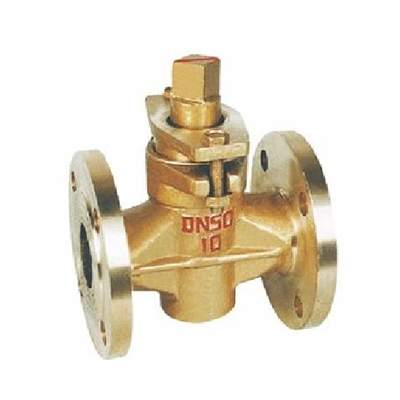Welcome to My Blog!
Before we dive into the content, if you’re interested in our products or have any questions, please feel free to visit our Contact Us page on the website. Our team is ready to assist you with inquiries, orders, or any support you may need.
Now, let’s get started on our journey together. I hope you find the content here insightful, engaging, and valuable.
Selecting the right plug valve for your system is crucial to ensure efficient flow control, long service life, and safe operation. Plug valves are widely used in industries such as oil and gas, chemical processing, water treatment, and power generation due to their simple design, reliable sealing, and quick quarter-turn operation. Choosing the wrong valve can result in increased maintenance, leakage, operational inefficiencies, or even system failure. This comprehensive guide will help you understand the factors to consider when selecting a plug valve for your specific application.
What Is a Plug Valve and How Does It Work?

A plug valve is a type of quarter-turn valve that uses a cylindrical or conically tapered plug to regulate fluid flow. The plug contains one or more hollow passageways (ports) that align with the pipeline to allow flow. Rotating the plug 90 degrees blocks the flow completely.
Main Components of a Plug Valve:
- Body: The main pressure boundary housing the plug and seats.
- Plug: The rotating element that opens or closes the flow path.
- Stem: Connects the plug to the handle or actuator.
- Seats: Provide a tight seal between the plug and valve body to prevent leakage.
Plug valves are appreciated for their simplicity, which allows for quick operation, minimal maintenance, and durability even under high-pressure or corrosive environments.
Factors to Consider When Choosing a Plug Valve
Application and Fluid Type
The first step is to evaluate the medium being controlled:
- Water, oil, or gas — clean fluids require standard plug valves, while viscous or abrasive fluids may need specialized designs.
- Chemical solutions — corrosive chemicals require materials like stainless steel or lined valves.
- Slurry or sludge — eccentric or expanding plug valves minimize plug wear and prevent jamming.
The fluid type determines both the plug valve material and the type of plug (lubricated vs. non-lubricated) you should choose.
Material Compatibility
Material selection is critical to prevent corrosion, erosion, and leakage:
- Cast Iron and Ductile Iron: Cost-effective for low-pressure, non-corrosive fluids.
- Carbon Steel: Suitable for high-pressure, moderate-temperature applications.
- Stainless Steel or Alloy Steels: Ideal for high-temperature, corrosive, or chemical applications.
- PTFE or PFA Linings: Used in chemical plants or wastewater systems to resist corrosive fluids.
Matching the material to your fluid ensures long-term durability and avoids costly valve failures.
Pressure and Temperature Ratings
Every plug valve has a maximum pressure and temperature rating. Selecting a valve with a rating below your system requirements may lead to:
- Leaks
- Plug deformation
- Premature valve failure
Check manufacturer specifications and industry standards, such as API 6D and ASME B16.34, to ensure compliance.
Port Configuration
- Two-way plug valves: Standard for simple on/off applications.
- Multi-port plug valves: Allow fluid diversion to different pipelines without multiple valves.
- Full bore vs. reduced bore: Full bore ensures minimal pressure drop and smooth flow, whereas reduced bore reduces weight and cost but slightly restricts flow.
The port configuration influences flow efficiency, installation flexibility, and maintenance needs.
Type of Plug Valve
Different designs cater to specific industrial requirements:
- Lubricated plug valves: Use sealants to reduce friction, suitable for abrasive or high-pressure systems.
- Non-lubricated plug valves: Require minimal maintenance and are preferred in sanitary or chemical applications.
- Eccentric plug valves: Offset plug reduces friction and wear, ideal for sludge, slurry, and wastewater.
- Expanding plug valves: Provide zero leakage for critical high-pressure or hazardous fluid applications.
Actuation Method
The valve can be operated manually or automatically depending on size and system needs:
- Manual operation: Handles or levers are ideal for small to medium valves.
- Gear-operated valves: Reduce torque for larger valves, making operation easier.
- Automated actuators: Electric or pneumatic actuators are suitable for remote or automated systems.
Selecting the correct actuation method ensures smooth operation and reduces operator effort.
Maintenance and Serviceability
- Ease of disassembly: Important for valves in abrasive or corrosive services.
- Lubrication requirements: Lubricated valves require regular sealant application to prevent sticking.
- Availability of spare parts: Helps minimize downtime during repair.
- Inspection frequency: Routine checks on seats, plugs, and body prevent leaks and extend lifespan.
A well-maintained plug valve reduces operational risk and total cost of ownership.
Standards and Certifications
Ensuring compliance with industry standards guarantees safety and reliability:
- API 6D: Standard for pipeline valves in oil and gas.
- ISO 5208: Specifies pressure testing requirements.
- ASME B16.34: Covers pressure-temperature ratings.
- Fire-safe and anti-static designs: Essential for hazardous applications.
Choosing certified valves protects your system and ensures regulatory compliance.
Plug Valve vs Other Valves
Understanding the differences between plug valves and other common valves helps in the selection process:
| Feature | Plug Valve | Ball Valve |
|---|---|---|
| Flow Control | On/off, minor throttling | On/off and full bore flow control |
| Abrasive Fluids | Excellent resistance | Seats may wear quickly |
| Maintenance | Easy to clean and repair | Seats may require replacement |
| Actuation | Manual, gear, or actuator | Manual or automated |
Plug valves excel in abrasive, viscous, or corrosive environments, whereas ball valves are more suitable for clean, general-purpose applications.
Typical Applications of Plug Valves
Plug valves are highly versatile and used in various industrial applications:
- Oil & Gas Pipelines: Isolation and flow diversion.
- Chemical Plants: Handling corrosive chemicals or solvents.
- Water & Wastewater Treatment: Eccentric plug valves prevent sludge buildup.
- HVAC Systems: Efficient flow control and switching.
- Power Generation & Mining: Reliable shutoff in harsh conditions.
Their adaptability to extreme temperatures, pressures, and abrasive fluids makes them a preferred choice across industries.
Maintenance Tips

Proper maintenance ensures a longer lifespan and reliable operation:
- Lubrication: Apply sealant to lubricated valves regularly.
- Inspection: Check seats and plugs for wear or leaks.
- Cleaning: Flush pipelines to remove debris that may cause jamming.
- Replacement: Swap out worn seals or plugs promptly.
Following these steps minimizes downtime and ensures consistent performance.
Conclusion
Choosing the right plug valve requires evaluating the fluid type, pressure and temperature requirements, material compatibility, port configuration, valve type, actuation method, and adherence to industry standards. By carefully assessing these factors, you can optimize flow control, reduce maintenance costs, and enhance system safety.
A correctly selected plug valve not only improves operational efficiency but also protects your infrastructure from premature failure or leakage.
FAQ
What is a plug valve used for?
A plug valve is used to start or stop the flow of liquids or gases in a pipeline. It is ideal for quick shutoff in high-pressure and high-temperature systems.
What are the main advantages of a plug valve?
Plug valves offer simple design, tight sealing, and quick quarter-turn operation. They are easy to maintain and suitable for handling abrasive or corrosive fluids.
What is the difference between a plug valve and a ball valve?
A plug valve uses a cylindrical or conical plug, while a ball valve uses a spherical ball. Plug valves handle abrasive or dirty fluids better, while ball valves are preferred for clean services.
Can plug valves be used for throttling?
Plug valves are primarily designed for on–off applications. They provide minor flow control but are not suitable for precise throttling.
How do you maintain a plug valve?
Regular lubrication (for lubricated types), cleaning, and inspection of seats and seals help prevent leakage and extend the valve’s lifespan.
Need Help Choosing the Right Plug Valve?
If you’re unsure which plug valve is best suited for your application, our valve experts are ready to assist. Contact us today for a personalized consultation and discover the most efficient, durable, and cost-effective solution for your system. Don’t leave performance to chance—get in touch now to optimize your flow control and protect your operation!
